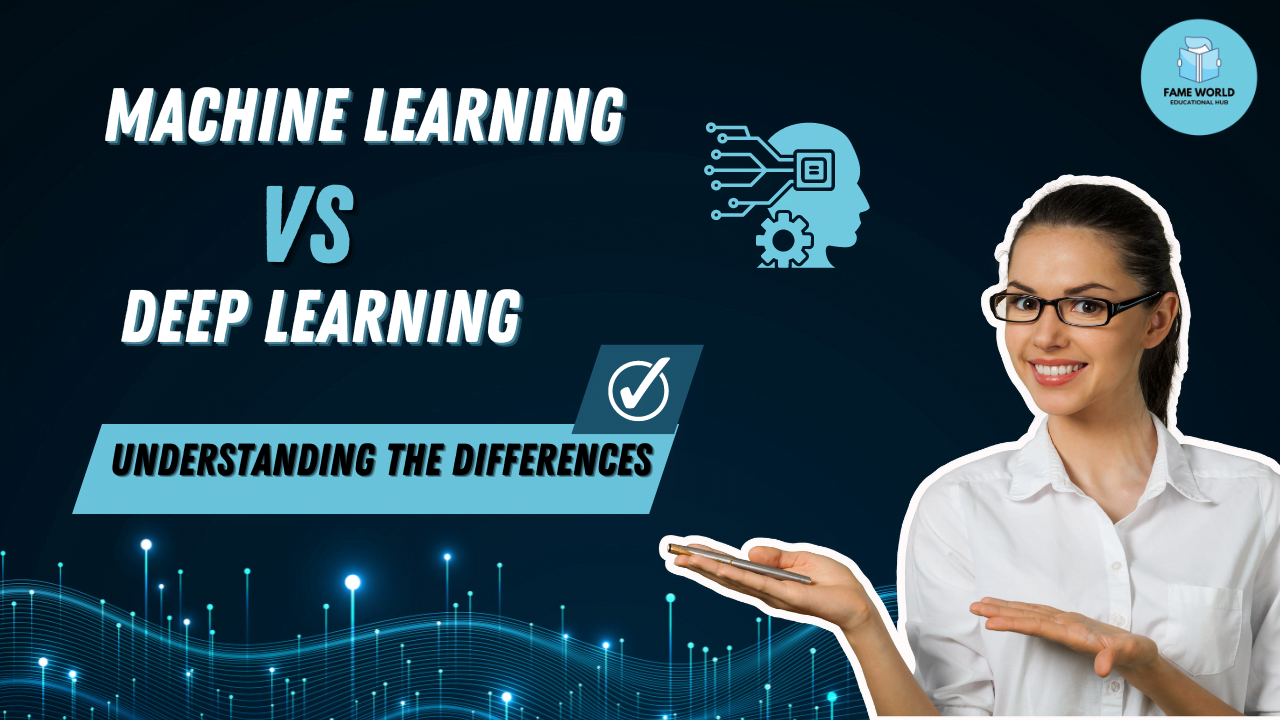In the realm of artificial intelligence (AI), machine learning (ML) and deep learning (DL) are often discussed, sometimes interchangeably. However, while they are closely related, they are distinct technologies with unique characteristics and applications. This blog post aims to demystify the differences between machine learning and deep learning, exploring their definitions, how they work, their applications, and their respective strengths and weaknesses.
What is Machine Learning?
Machine learning is a subset of artificial intelligence that involves the use of algorithms to allow computers to learn from and make decisions based on data. Unlike traditional programming, where explicit instructions are given to perform a task, machine learning models learn patterns from data and improve their performance over time without being explicitly programmed to do so.
Types of Machine Learning
Supervised Learning: This involves training a model on a labeled dataset, where the input data is paired with the correct output. The model learns to map inputs to outputs and is evaluated based on its accuracy on unseen data. Examples include classification (e.g., spam detection) and regression (e.g., predicting house prices).
Unsupervised Learning: This type deals with unlabeled data, aiming to find hidden patterns or intrinsic structures in the input data. Common methods include clustering (e.g., customer segmentation) and dimensionality reduction (e.g., Principal Component Analysis).
Reinforcement Learning: In this approach, an agent learns to make decisions by taking actions in an environment to maximize cumulative rewards. It is widely used in areas such as robotics and game playing.
Key Algorithms in Machine Learning
- Linear Regression: Used for predicting continuous values based on input features.
- Decision Trees: Useful for classification and regression tasks by splitting data into subsets.
- Support Vector Machines (SVM): Effective for classification tasks, especially with high-dimensional data.
- k-Nearest Neighbors (k-NN): A simple, instance-based learning algorithm used for classification and regression.
What is Deep Learning?
Deep learning is a specialized subset of machine learning that focuses on neural networks with many layers, known as deep neural networks. These models are designed to automatically learn representations from data, enabling them to handle complex and high-dimensional data.
How Deep Learning Works
Deep learning models are composed of layers of interconnected nodes, or neurons, that mimic the structure and function of the human brain. Each layer transforms the input data and passes it to the next layer, allowing the network to learn increasingly abstract features. Training deep learning models requires large amounts of data and computational power.
Key Concepts in Deep Learning
- Neural Networks: The fundamental building blocks of deep learning, consisting of input, hidden, and output layers.
- Convolutional Neural Networks (CNNs): Primarily used for image and video recognition tasks. CNNs leverage convolutional layers to detect spatial hierarchies in data.
- Recurrent Neural Networks (RNNs): Designed for sequence data such as time series or natural language. RNNs maintain a memory of previous inputs, making them suitable for tasks like language modeling and translation.
- Generative Adversarial Networks (GANs): Comprising two neural networks, a generator and a discriminator, GANs are used for generating new, synthetic instances of data that resemble real data.
Key Differences Between Machine Learning and Deep Learning
Complexity of Models
- Machine Learning: Typically involves simpler models and requires manual feature engineering, where domain knowledge is used to extract relevant features from raw data.
- Deep Learning: Utilizes complex neural networks with many layers, capable of automatically learning features from raw data, often eliminating the need for manual feature extraction.
Data Requirements
- Machine Learning: Can perform well with smaller datasets. Performance may degrade if the dataset is too small or lacks diversity.
- Deep Learning: Requires large amounts of data to achieve high performance. Deep learning models often need substantial data to generalize effectively and avoid overfitting.
Computational Resources
- Machine Learning: Generally less computationally intensive and can be run on standard hardware.
- Deep Learning: Requires significant computational resources, including powerful GPUs or TPUs, due to the complexity and depth of the models.
Interpretability
- Machine Learning: Models are often more interpretable, allowing users to understand how decisions are made based on the input features.
- Deep Learning: Models are often seen as “black boxes,” making it challenging to interpret the decision-making process due to the high complexity and numerous layers.
Applications and Use Cases
Machine Learning
- Finance: Fraud detection, credit scoring.
- Healthcare: Disease prediction, patient risk assessment.
- Retail: Recommendation systems, inventory management.
Deep Learning
- Computer Vision: Image recognition, object detection.
- Natural Language Processing: Language translation, sentiment analysis.
- Autonomous Vehicles: Perception systems, navigation.
Conclusion
While both machine learning and deep learning are powerful tools in the AI toolkit, they serve different purposes and excel in different areas. Machine learning is suitable for a wide range of tasks with structured data and smaller datasets, while deep learning shines in applications requiring complex feature extraction and large amounts of data. Understanding these differences can help in selecting the right approach for a given problem and leveraging the strengths of each technique effectively.
As AI continues to evolve, both machine learning and deep learning will play crucial roles in shaping the future of technology and innovation.



